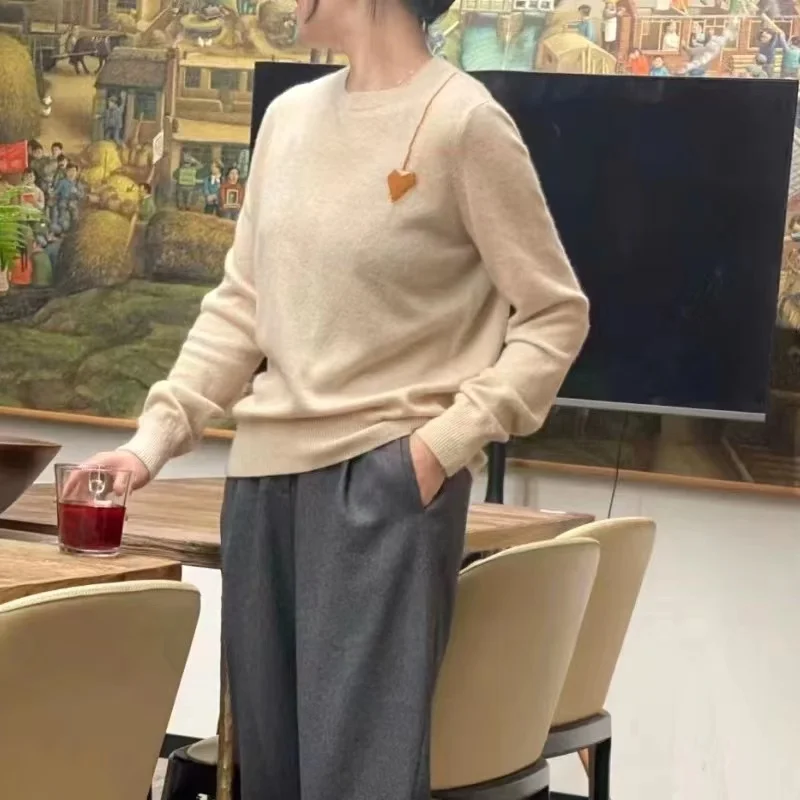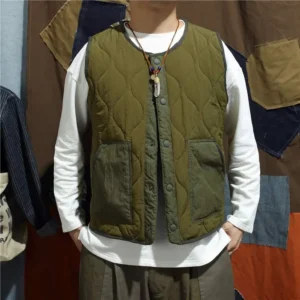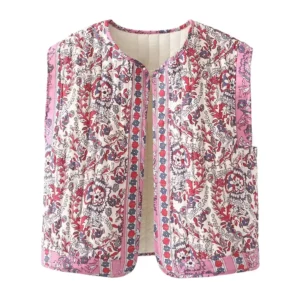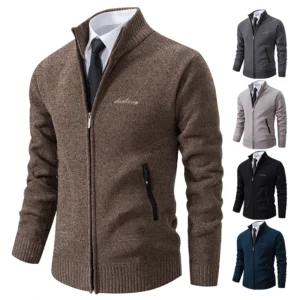Beyond Winter Warmth: Why Cashmere Excels in Transitional Seasons
Forget everything you thought you knew about cashmere – this exceptional fabric isn’t just for winter’s harshest days. The secret that style insiders have embraced for years is that cashmere actually shines brightest during those in-between seasons when temperatures fluctuate unpredictably. Understanding year-round cashmere comfort transforms how you’ll approach your wardrobe planning from January through December.
What makes cashmere uniquely suited for transitional weather? The answer lies in the remarkable natural engineering of the fibers themselves.
Cashmere possesses five extraordinary properties that set it apart from every other fabric in your wardrobe:
Natural thermoregulation: Cashmere fibers adapt to your body temperature, creating a microclimate that keeps you comfortable regardless of external conditions. Unlike synthetic materials that trap heat indiscriminately, cashmere responds dynamically to both your body and the environment.
Exceptional breathability: The microscopic structure of cashmere fibers allows air circulation without compromising warmth. This prevents the clammy feeling common with non-natural fibers during temperature shifts.
Lightweight insulation: Despite weighing significantly less than wool, cashmere provides up to three times more insulation. This remarkable warmth-to-weight ratio makes it perfect for layering without bulk during unpredictable weather.
Superior moisture management: Cashmere can absorb up to 30% of its weight in moisture without feeling wet to the touch, compared to cotton’s 8%. This wicking capability keeps you dry and comfortable even as temperatures rise and fall throughout the day.
Unmatched softness: The superfine diameter of quality cashmere fibers (under 19 microns) creates a gentle touch against skin that becomes increasingly important during seasonal transitions when fabrics make direct contact with more skin.
When compared to other premium natural fibers, cashmere’s advantages become even clearer. While merino wool offers good temperature regulation, it can’t match cashmere’s softness or lightweight feel. Cotton breathes well but lacks insulation properties, leaving you vulnerable to sudden temperature drops. Silk provides luxury but without cashmere’s natural stretch or temperature-regulating capabilities.
The versatility of cashmere sweaters throughout changing seasons stems directly from these inherent properties. By understanding how cashmere adapts to your body’s needs, you can leverage its natural advantages across your entire wardrobe.
Understanding Cashmere Weights and Weaves for Different Seasons
To truly master cashmere’s year-round potential, you need to understand how different weights and weaves translate to seasonal versatility. These variations determine whether a piece will be your go-to for cool summer evenings or brisk autumn days.
Cashmere garments are typically categorized by gauge (the number of stitches per inch), ply (how many yarn strands are twisted together), and weight (the overall density of the fabric). These technical factors directly impact how a piece performs in different temperatures.
The spectrum of cashmere weights creates opportunities for year-round wear:
Ultra-lightweight (7-10 gauge): These exceptionally fine knits are perfect for summer evenings when temperatures drop slightly. The loose, open structure allows maximum airflow while providing just enough warmth to combat air conditioning or evening breezes.
Lightweight (12-14 gauge): Ideal for spring and early autumn, these versatile pieces offer moderate warmth without overheating. The lightweight cashmere essential guide explains how these pieces can transition from cool mornings to warmer afternoons with ease.
Medium weight (16-18 gauge): These substantial but not bulky knits excel during deep autumn when temperatures consistently drop. They provide reliable warmth while maintaining cashmere’s natural breathability.
Heavy gauge (21+ gauge): Reserved primarily for winter, these densely knitted pieces maximize warmth through minimal air penetration. While less versatile across seasons, they form the foundation of winter cashmere collections.
Beyond gauge, the weave pattern significantly affects a garment’s seasonal performance. Open, looser weaves enhance breathability for warmer conditions, while tightly structured weaves increase insulation for cooler environments. The interaction between gauge and weave creates endless possibilities for transitional weather adaptability.
Fiber quality becomes particularly crucial for transitional cashmere pieces. Only the highest-grade cashmere maintains its shape and performance when subjected to variable temperatures and repeated wearing. Lesser quality fibers quickly lose their resilience when facing the demands of transitional weather wear.
For consumers seeking to build a year-round cashmere collection, understanding the comprehensive guide to cashmere yarn weight empowers smarter purchasing decisions. When examining cashmere labels, look beyond simple “lightweight” or “heavyweight” descriptions to specific gauge numbers when available, as these provide the most accurate indication of seasonal suitability.
Essential Lightweight Cashmere Sweaters for Spring and Summer
The concept of “summer cashmere” might seem contradictory at first, but lightweight cashmere has become increasingly sought-after for warmer months. These specialized pieces deliver cashmere’s luxurious feel without the warmth associated with traditional winter varieties.
For spring and summer cashmere, certain styles have emerged as seasonal essentials:
Fine-gauge crewnecks represent perhaps the most versatile transitional piece. Their classic silhouette pairs effortlessly with everything from tailored trousers to casual shorts. The smooth surface and traditional profile make these suitable for both professional settings and weekend wear. During cooler mornings, layer under a light jacket; as temperatures rise, the crewneck stands alone as a refined alternative to cotton t-shirts.
V-neck styles offer enhanced ventilation and an elongating visual effect. The neckline naturally allows heat dissipation, making these ideal for days when temperatures fluctuate significantly. V-necks in pale neutrals or soft pastels reflect rather than absorb sunlight, further enhancing their warm-weather performance.
Short-sleeve cashmere sweaters deliver the perfect compromise between cashmere comfort and bare-arm breathability. These increasingly popular options function essentially as luxury t-shirt alternatives, elevating casual outfits while providing gentle temperature regulation against evening chills or aggressive air conditioning.
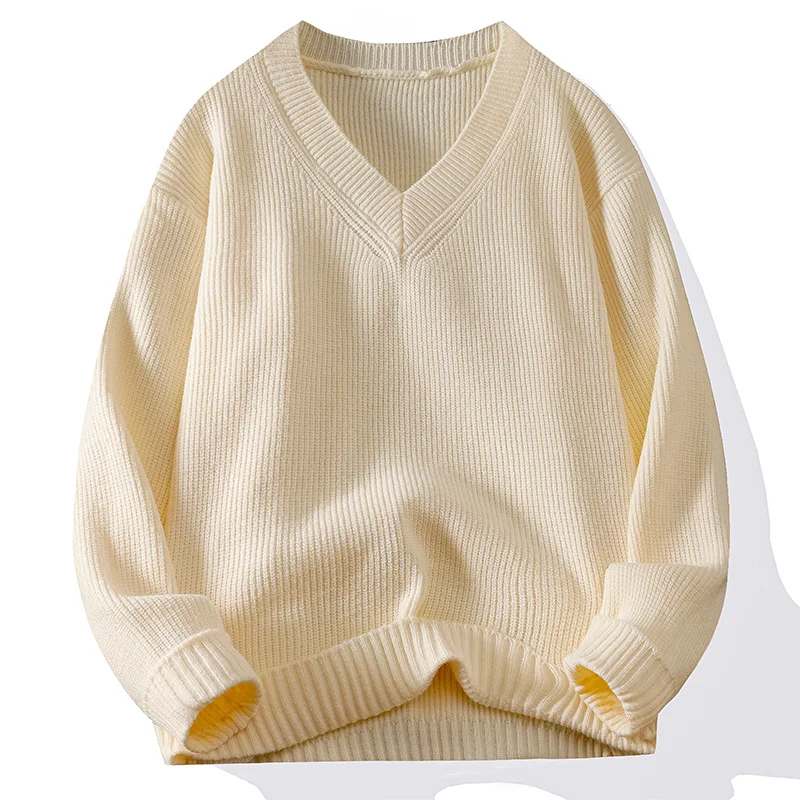
Open-knit styles with visible space between stitches maximize airflow while maintaining cashmere’s intrinsic structure and drape. These architectural pieces create visual interest while functioning practically in warmer conditions. They’re particularly effective as beach or poolside cover-ups when temperatures dip after sunset.
For genuine warm-weather versatility, focus on cashmere knits at 14 gauge or higher, which provides the delicacy needed for comfort above 65°F (18°C). These finer knits can be worn directly against skin without overheating, unlike their heavier winter counterparts.
Styling lightweight cashmere for warmer months involves embracing contrast: pair the luxury of cashmere with casual warm-weather pieces like linen shorts, flowing skirts, or cropped trousers. This juxtaposition creates sophisticated yet relaxed outfits perfect for transitional seasons.
Care considerations become particularly important for lightweight cashmere pieces. Their delicate structure requires gentle handwashing rather than machine cycles, and they must be dried flat with careful reshaping to maintain their intended dimensions. The investment in proper care ensures these best cashmere for mild weather pieces remain vibrant and beautiful throughout multiple seasons.
Versatile Cashmere Layers for Autumn and Cooler Days
Autumn represents cashmere’s natural habitat – the season where this remarkable fiber truly demonstrates its full potential. As temperatures begin their gradual descent and daily fluctuations become more pronounced, cashmere’s adaptive properties make it the ideal choice for layered dressing strategies.
The autumn cashmere wardrobe centers around these essential pieces:
Button-down and open-front cardigans provide the adaptability crucial for autumn’s unpredictable patterns. These versatile layers can be worn fully closed during chilly mornings, partially unbuttoned during midday warmth, and open as lightweight outerwear for evening transitions. The adjustability of front-opening styles makes them particularly valuable during temperature fluctuations.
Mock neck and turtleneck styles deliver targeted warmth where it matters most. These higher-coverage options protect the sensitive neck area from cool breezes while adding visual structure to layered outfits. A lightweight cashmere turtleneck under a blazer or jacket creates an elegant silhouette while providing practical warmth without bulk.
Cashmere hoodies and sweatshirt alternatives elevate casual autumn dressing with their sophisticated take on relaxed silhouettes. These pieces maintain the comfort and functionality of traditional athletic wear while adding cashmere’s luxurious hand-feel and temperature regulation. They excel for weekend activities when comfort and style must coexist.
Long cashmere cardigans make dramatic statements while serving practical purposes. These statement pieces create vertical lines that flatter all body types while providing adjustable coverage as temperatures shift. Their versatility allows them to function as light outerwear during early autumn and as insulating middle layers when winter approaches.
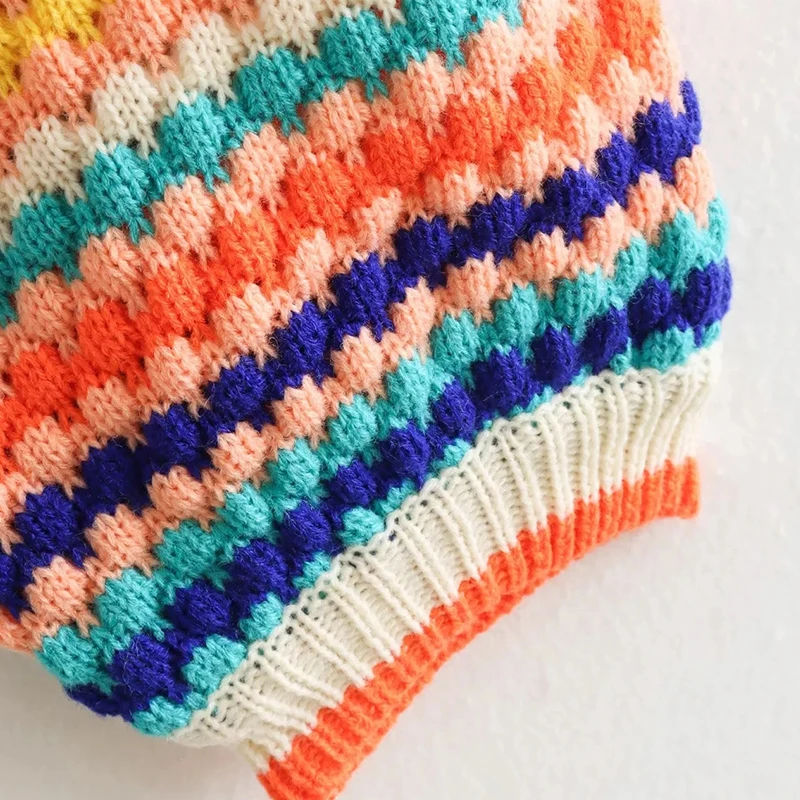
Medium-weight options (16-18 gauge) offer the ideal balance for autumn’s moderate temperatures. These pieces provide substantive warmth without the heaviness of winter knits, allowing comfortable wear during the day with enough insulation for cooler evenings.
When styling autumn cashmere, embrace complementary textures like denim, corduroy, and suede that enhance cashmere’s natural softness through contrast. Creating tonal outfits with varied textures adds sophistication and visual interest while maintaining a cohesive palette.
Color selection becomes especially important for autumn cashmere. Beyond standard neutrals, consider rich seasonal hues that reflect nature’s changing palette – burnt orange, forest green, deep burgundy, and golden yellow all harmonize beautifully with autumn environments. These colors create visual connections with the season while maintaining versatility within your wardrobe.
Learning how to wear cashmere in unpredictable weather enables you to navigate autumn’s changeable conditions with confidence and style. The key lies in building a collection with varied weights and styles that can be layered according to the day’s forecast.
Essential Cashmere Accessories: The Ultimate Transitional Weather Tools
Cashmere accessories represent the most adaptable and approachable entry point into year-round cashmere wearing. These versatile pieces can transform basic outfits while providing targeted warmth exactly where needed, making them indispensable for navigating transitional weather.
The strategic advantage of cashmere accessories lies in their portable nature – they can be easily added or removed as temperatures shift throughout the day, providing immediate comfort adjustment without requiring complete outfit changes.
Lightweight wraps and stoles offer perhaps the greatest versatility among cashmere accessories. These generous rectangular pieces can be draped over shoulders, wrapped around the neck, or even used as improvised blankets during travel. Their adaptability makes them perfect companions for environments with unpredictable temperatures, from restaurants to airplanes to outdoor venues.
Triangular scarves create architectural interest while providing practical neck protection. Their geometric shape allows multiple styling approaches – loosely draped, wrapped multiple times, or knotted asymmetrically. This flexibility makes them particularly useful during seasonal transitions when styling needs may change throughout the day.
Travel wraps deserve special mention for their multifunctional nature. These oversized pieces blur the line between accessory and garment, functioning variously as scarves, blankets, or even makeshift cardigans. For travelers facing multiple climate zones, these adaptable items reduce packing needs while ensuring comfort across diverse environments.
Cashmere wrap sweaters combine the ease of accessories with the structure of garments, creating elegant solutions for variable conditions. Their adjustable nature allows for personalized coverage as conditions change.
Cashmere beanies and headbands provide targeted warmth for the head and ears – areas where significant body heat escapes. These compact accessories take up minimal space in bags but deliver maximum comfort impact when temperatures drop unexpectedly. Their small size makes them perfect “just in case” items during transitional seasons.
The packability of cashmere accessories makes them ideal travel companions. Unlike bulkier knits, accessories can be compressed into small spaces without damage, allowing travelers to prepare for temperature variations without sacrificing luggage space. A well-selected cashmere accessory can transform a basic travel wardrobe into a versatile collection suitable for multiple climates.
To maximize accessory versatility, focus on neutral colors that complement your existing wardrobe while considering one or two statement pieces in signature hues that express personal style. This balanced approach ensures maximum wearability while maintaining visual interest.
Innovative Cashmere Pieces for Modern Transitional Wardrobes
The cashmere landscape has evolved far beyond traditional sweaters, with innovative designs specifically engineered for transitional weather challenges. These contemporary interpretations expand cashmere’s functionality while maintaining its luxurious essence.
Modern cashmere innovations worth exploring include:
Cashmere vests and gilets provide targeted core warmth while leaving arms unencumbered. This strategic approach to body temperature regulation makes them ideal for active transitional days when freedom of movement matters. Layer them over lightweight shirts for early autumn, under blazers for winter-to-spring transitions, or wear them solo as statement pieces during cool summer evenings.
Cashmere joggers and loungewear have revolutionized the comfort clothing category, elevating traditionally casual pieces to luxury status. These relaxed styles combine the comfort of athletic wear with cashmere’s superior temperature regulation and softness. Perfect for home environments with varying heating conditions or for travel between different climate zones.
Mens cashmere polos represent a sophisticated hybrid that bridges formal and casual contexts. These innovative pieces offer the familiar comfort of traditional polo styling with significantly enhanced temperature regulation and softness. They excel in environments where dress codes fall between casual and business casual, adapting to temperature changes without sacrificing polish.

Cashmere ponchos and capes make dramatic fashion statements while serving practical purposes. Their flowing silhouettes create elegant draping while accommodating variable layering underneath. The absence of structured sleeves allows these pieces to work across multiple seasons – simply adjust the underlying layers according to temperature needs.
The integration of cashmere into athleisure represents one of the most significant innovations in transitional dressing. This merging of performance-oriented design with luxury fiber creates pieces that function beautifully during active transitional days. Look for cashmere-blend performance wear that combines natural temperature regulation with technical features like moisture management and stretch recovery.
Cashmere vests have become particularly valuable for variable temperatures, offering core warmth without restricting movement or creating overheating. Their sleeveless design makes them perfect transitional pieces for layering or wearing alone.
To style these innovative pieces effectively, embrace the high-low mix – pair luxurious cashmere with more casual elements to create balanced outfits appropriate for modern lifestyles. This approach maximizes versatility while creating distinctive personal style statements.
Mastering the Art of Cashmere Layering Through Seasons
Strategic layering transforms cashmere from seasonal specialty to year-round essential. By understanding fundamental layering principles, you can create adaptable outfits that respond to changing conditions without sacrificing style or comfort.
The foundation of effective cashmere layering rests on these core principles:
The rule of three creates optimal adaptability through a strategic combination of layers: a lightweight base layer for direct skin contact, a middle cashmere layer for insulation and temperature regulation, and a removable outer layer for protection against elements. This triumvirate allows removal or addition of components as conditions change throughout the day.
Strategic material combinations maximize cashmere’s natural properties. Pair cashmere with silk for lightweight insulation without bulk, with linen for temperature contrast during seasonal transitions, or with cotton for breathable comfort. Each combination creates different functional effects while maintaining comfort.
Layering cashmere for spring and fall requires thoughtful color coordination to ensure seamless layer removal. When pieces may be removed as temperatures change, maintaining visual harmony between all components becomes essential. Creating a cohesive color story ensures your outfit remains intentional regardless of which layers remain visible.
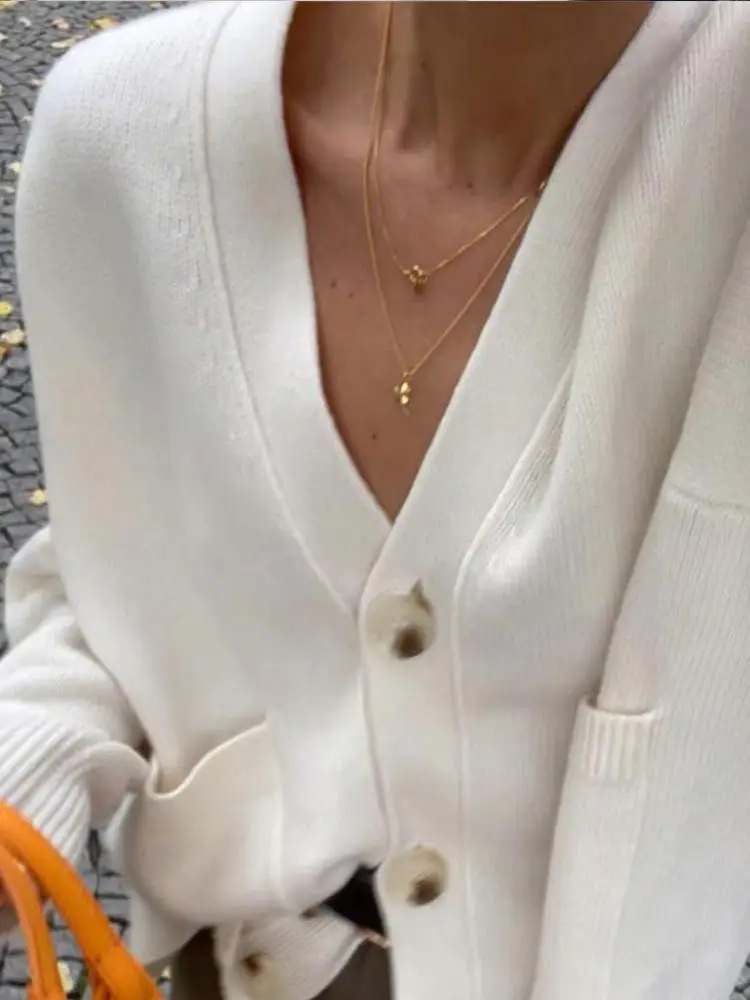
For specific transitional scenarios, consider these targeted approaches:
Morning chill to afternoon warmth: Begin with a lightweight cashmere base layer, add a medium-weight cashmere cardigan, and top with a removable jacket or coat. As temperatures rise, remove outer layers while maintaining the polished appearance of quality cashmere.
Air-conditioned interiors to warm exteriors: Keep a lightweight cashmere wrap or cardigan accessible for cold indoor environments, choosing breathable base layers that perform well in warmer outdoor conditions. This approach prevents the discomfort of constant temperature shifts.
Unexpected weather changes: Incorporate packable cashmere accessories that can be easily deployed when conditions shift suddenly. A rolled cashmere scarf occupies minimal bag space but provides immediate comfort when needed.
Building a cashmere layer system that adapts to temperature shifts requires investment in versatile foundation pieces. Focus first on neutral-colored items in varying weights that can be mixed and matched effortlessly, then add seasonal accent pieces that introduce color and texture variety.
Cashmere Wrap Sweaters, Women's Cashmere Pullovers
$75.89 Select options This product has multiple variants. The options may be chosen on the product pageCashmere Cable Knit Sweaters, Women's Cashmere Pullovers
Price range: $111.82 through $112.93 Select options This product has multiple variants. The options may be chosen on the product page- Price range: $171.47 through $181.33 Select options This product has multiple variants. The options may be chosen on the product page
Cropped Cashmere Sweaters, Women's Cashmere Pullovers
$155.77 Select options This product has multiple variants. The options may be chosen on the product page- Price range: $87.29 through $91.47 Select options This product has multiple variants. The options may be chosen on the product page
- Price range: $102.02 through $109.37 Select options This product has multiple variants. The options may be chosen on the product page
The key to successful year-round cashmere lies in thoughtful layering that anticipates temperature changes rather than merely reacting to them. By planning adaptable combinations, you’ll maximize both comfort and the value of your cashmere investment.
Color Selection Strategies for Year-Round Cashmere
Color choice significantly impacts how effectively cashmere pieces transition between seasons. Strategic color selection extends wearability while ensuring your cashmere collection maintains visual freshness throughout the year.
Optimal color strategies for transitional cashmere include:
Year-round neutrals form the foundation of a versatile cashmere collection. Camel, gray, navy, and ivory work across all seasons and coordinate effortlessly with seasonal colors. These investment shades maintain their appropriateness regardless of calendar date, making them ideal for core pieces like v-necks and cardigans.
Seasonal-transitional colors bridge multiple times of year through their adaptable nature. Soft sage connects spring greenery with summer foliage; dusty rose transitions from winter pink to spring blush; muted blue works from summer skies to winter ice tones. These versatile hues extend wearability beyond a single season.
Statement seasonal colors should be incorporated strategically, usually through accessories or smaller pieces. While a bright autumn orange cashmere scarf adds perfect seasonal pop, the same color in a full sweater might feel limited in wearability. Reserve bold seasonal colors for items with lower cost-per-wear or smaller silhouettes.
Color psychology plays a surprising role in transitional dressing. Warmer tones (reds, oranges, yellows) visually increase perceived warmth, while cooler tones (blues, greens, purples) create visual cooling effects. This psychological impact can be leveraged strategically during season changes – reaching for cooler tones during early spring or warmer tones during early autumn creates harmony with changing environments.
When building a coordinated cashmere collection, consider how pieces will interact across your wardrobe. Selecting colors within related families creates multiplicative outfit combinations rather than isolated pairings. This approach maximizes versatility while minimizing required purchases.
Striped cashmere sweaters offer particular versatility across seasons, as patterns incorporating multiple colors create natural bridges between seasonal palettes. A navy and ivory striped piece, for example, transitions easily from nautical summer styling to preppy autumn looks.
Specialized Care for Lightweight and Transitional Cashmere
Lightweight and transitional cashmere requires specialized care approaches that differ from heavy winter pieces. Understanding these distinctions helps preserve your investment while ensuring optimal performance across seasons.
The care requirements for lightweight cashmere differ primarily because:
– Finer gauge knits have less structural stability, making them more vulnerable to stretching
– Transitional pieces experience more frequent wearing cycles and varied conditions
– Lightweight items often encounter more direct skin contact and body oils
– Seasonal storage periods create additional preservation challenges
Essential care protocols for transitional cashmere include:
Hand washing techniques specifically developed for fine-gauge cashmere preserve delicate structures. Use room temperature water (never hot) with specialized cashmere shampoo or gentle detergent free from enzymes or brighteners. Support the weight of wet cashmere at all times to prevent stretching, and use gentle pressing motions rather than wringing or twisting.
Drying methods for lightweight pieces require particular attention. Always dry flat on a clean towel, gently reshaping to original dimensions without stretching. Rotate the item and replace the towel several times during drying to accelerate the process. Never hang lightweight cashmere when wet as gravity will permanently distort the shape.
Storage solutions between seasonal use must address both physical and environmental factors. Store clean items folded with acid-free tissue paper in breathable cotton bags, never in plastic which traps moisture. Place cedar blocks nearby (not in direct contact) to deter moths, and refresh these natural repellents quarterly.
Pilling management becomes especially important for transitional pieces that experience frequent wear. Unlike heavier cashmere where pills may form and stabilize, lightweight pieces require ongoing maintenance. Use a specialized cashmere comb or gentle fabric shaver, working in one direction with minimal pressure to remove pills without damaging fibers.
The ultimate guide to cashmere care and washing provides comprehensive techniques for maintaining all cashmere types. Following these specialized approaches ensures your transitional pieces maintain their beauty and performance across multiple seasons.
For emergency care during transitional weather challenges, keep these solutions handy:
– Unexpected rain: Gently blot (never rub) with absorbent cloth, then lay flat to dry naturally away from direct heat
– Sudden spills: Immediately blot with clean cloth, avoid rubbing which drives stains deeper into fibers
– Travel emergencies: Pack individually-sized cashmere wash packets and portable drying aids for on-the-go care
Seasonal rotation practices extend cashmere longevity by preventing continuous wear stress. Establish a system for rotating pieces in and out of active wardrobes, allowing recovery time between wearings when possible.
Evaluating Quality in Transitional Cashmere Investments
Quality assessment becomes particularly crucial for transitional cashmere pieces, which must perform reliably across variable conditions while withstanding frequent wear cycles. Understanding key quality indicators helps identify pieces worthy of investment.
Essential quality factors for transitional cashmere include:
Fiber length and origin directly impact performance and longevity. Premium cashmere comes from the undercoats of high-altitude goats from Mongolia and China, where harsh climate conditions produce longer, finer fibers (exceeding 36mm). These longer fibers resist pilling and maintain structural integrity through repeated wearing and temperature changes. When evaluating pieces, ask specifically about fiber length and geographic origin.
Ply and construction techniques determine durability during transition season stress. Two-ply cashmere (two yarns twisted together) generally offers the optimal balance between lightweight feel and structural integrity for transitional pieces. Look for tight, even stitching with consistent tension throughout the garment, particularly examining seams and stress points.
Finishing processes significantly affect adaptability across conditions. Quality transitional cashmere undergoes specialized washing techniques that pre-stabilize the fabric, preventing the shape distortion that often occurs with temperature and humidity changes. This “blocking” process ensures the garment maintains its intended dimensions throughout varying environmental conditions.
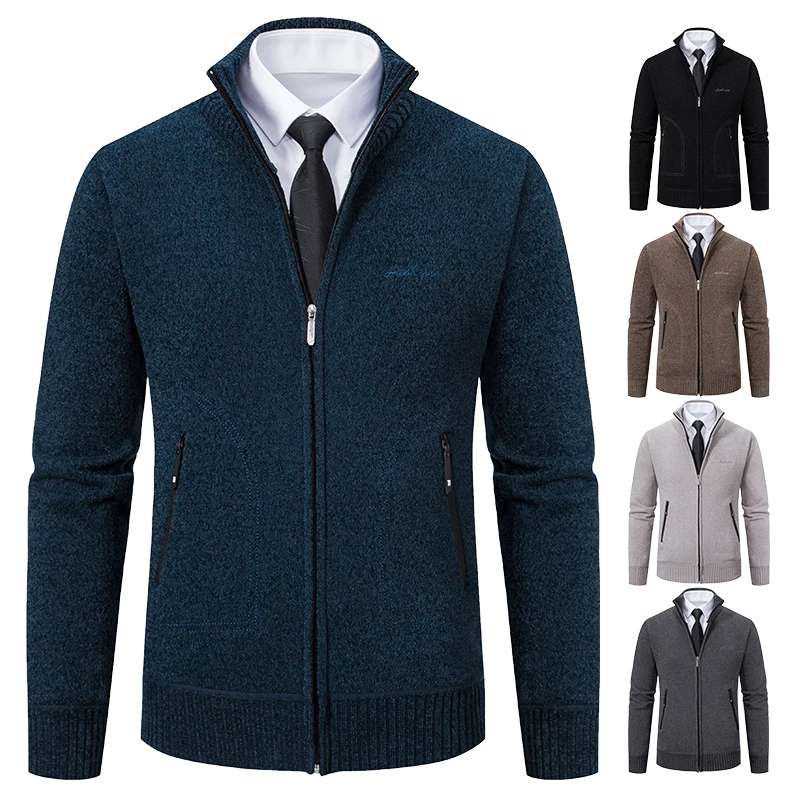
Weight appropriateness for intended use determines practical versatility. Even the finest cashmere fibers will disappoint if knitted at an inappropriate weight for their intended season. Ensure the gauge matches your climate needs – lightweight (14+ gauge) for warmer transitions, medium (12-14 gauge) for moderate conditions.
When shopping in person, employ these hands-on testing techniques:
- The recovery test: Gently stretch the fabric in different directions – quality cashmere should spring back immediately to its original shape
- The pilling assessment: Rub the fabric between fingers or against itself – excessive fiber release indicates poor quality that will quickly deteriorate
- The light test: Hold the garment against light to check for knitting consistency and density appropriate to the stated weight
- The temperature test: Hold the fabric against your face or neck – quality cashmere feels cool initially then quickly warms, while inferior fibers feel immediately warm or slightly synthetic
For online purchases where tactile assessment isn’t possible, research becomes essential. Examine the retailer’s reputation specifically for cashmere quality, seek detailed fiber specifications, and investigate return policies that allow proper evaluation upon receipt.
Estate Cloth’s quality cashmere cardigans demonstrate the construction standards that ensure transitional performance, with attention to these quality indicators that affect real-world wearability.
Understanding price-quality relationships helps establish realistic expectations. While quality cashmere represents a significant investment, price alone doesn’t guarantee excellence. Instead, focus on the specific quality indicators above, recognizing that genuine craftsmanship often falls within predictable price ranges based on material costs and construction requirements.
Building a Versatile Cashmere Collection: Where to Begin?
Creating a strategic approach to building a transitional cashmere wardrobe maximizes both versatility and investment value. By prioritizing certain pieces and understanding their functional relationships, you can establish a foundation that serves you across all seasons.
For those beginning their cashmere collection, consider this acquisition hierarchy:
The essential first purchase should be a lightweight v-neck or cardigan in a neutral shade that complements your existing wardrobe. This foundation piece offers maximum versatility across seasons and occasions. For most wardrobes, a light-to-medium gray, navy, or camel represents the safest initial investment, providing a functional piece that spans casual to business settings.
Second-tier additions should include accessories and specialized pieces that address specific transitional challenges in your lifestyle. A cashmere wrap for travel and evening temperature drops, a lightweight scarf for air-conditioned environments, or a slightly heavier cardigan for consistent layering all make excellent secondary investments.
When building a cashmere capsule wardrobe, distinguish between investment pieces (those worn frequently across multiple seasons) and experimental items (seasonal colors, trend-influenced styles). Allocate the majority of your budget to the former while allowing smaller portions for the latter.
Budget allocation strategies should reflect actual wearing patterns rather than aspirational scenarios. Analyze your true lifestyle needs – if you rarely attend formal events, prioritizing casual cashmere makes more sense than investing in dressy pieces regardless of conventional wardrobe advice.
Integration with existing garments determines real-world versatility. Before purchasing, mentally inventory your current wardrobe and identify at least five complete outfits incorporating the new cashmere piece. This exercise ensures additions enhance rather than complicate your dressing process.
Personal lifestyle assessment should guide collection development. Consider factors like:
– Climate patterns where you live (length and severity of seasons)
– Professional dress requirements
– Travel frequency and destinations
– Typical social activities and settings
– Personal temperature sensitivity
– Laundering preferences and capabilities
By aligning cashmere selections with these lifestyle factors, you create a collection that serves your actual needs rather than generic recommendations. This personalized approach maximizes the functional value of each investment piece.
The approach to mastering a cashmere transitional wardrobe emphasizes quality over quantity. A carefully curated collection of 5-7 versatile pieces will serve you better than numerous lower-quality items that deliver disappointing performance across seasons.
The Environmental Benefits of Year-Round Cashmere
Extending cashmere’s wearability across seasons delivers significant environmental advantages beyond personal style benefits. Understanding these sustainability aspects adds another dimension to the value of transitional cashmere investments.
The environmental case for year-round cashmere centers on several key factors:
Reduced wardrobe volume represents perhaps the most significant sustainability advantage. When individual pieces function across multiple seasons, fewer total garments are required to meet your needs. This reduction in overall consumption directly decreases resource utilization and manufacturing impacts. A single quality cashmere cardigan that works from September through May might replace three season-specific alternatives.
Superior longevity compared to synthetic alternatives dramatically changes the environmental calculation. While high-quality cashmere requires initial resource investment, its potential lifespan measured in decades rather than seasons creates favorable sustainability mathematics. Properly cared for cashmere can remain beautiful and functional for 20+ years, compared to synthetic knits that typically deteriorate within 2-3 years.
Reduced washing frequency requirements lower the ongoing environmental footprint. Cashmere’s natural resistance to odor absorption means items need cleaning far less frequently than synthetic alternatives – often 5-10 wearings between washes versus 1-2 for synthetic knits. This reduction in washing cycles conserves water and energy while extending garment life through decreased processing stress.
Natural biodegradability at end-of-life completes cashmere’s environmental story. Unlike petroleum-based synthetics that persist in landfills for centuries, natural cashmere eventually decomposes without leaving microplastic residue. This natural life cycle represents a fundamental advantage over artificial alternatives.
The concept of investment dressing versus fast fashion represents a paradigm shift in consumption patterns. When consumers prioritize fewer, better items worn frequently and maintained carefully, the overall environmental impact decreases dramatically compared to continuous consumption of disposable fashion items.
The versatility of lightweight cashmere during temperature changes demonstrates how adaptable natural materials can reduce the need for excessive consumption. This multifunctionality represents a central tenet of sustainable wardrobe development.
Creative Styling: Unexpected Ways to Wear Cashmere in Warmer Months
Challenging conventional assumptions about cashmere’s seasonal limitations unlocks new styling possibilities. Creative approaches to warm-weather cashmere expand your wardrobe options while maximizing investment value.
Innovative warm-weather styling techniques include:
Cashmere as evening cover-ups for summer events solves the universal challenge of fluctuating temperatures after sunset. A lightweight cashmere wrap in a pale neutral or soft pastel provides elegant shoulder coverage without the bulkiness of traditional jackets. Drape casually over summer dresses or sleeveless evening wear for seamless transition from warm days to cool nights.
Lightweight cashmere for beach sunsets represents sophisticated coastal styling. A fine-gauge cashmere sweater or cardigan paired with linen pants and leather sandals creates effortless elegance for oceanside dining or evening walks. The natural fibers harmonize beautifully while providing practical warmth as sea breezes intensify.
Office air conditioning survival strategies center on strategic cashmere layering. A lightweight cardigan or wrap kept at your workspace transforms uncomfortable over-cooling into cozy productivity. Selecting seasonally appropriate colors – soft blues, pale greens, gentle neutrals – maintains visual harmony with summer wardrobes while providing practical comfort.
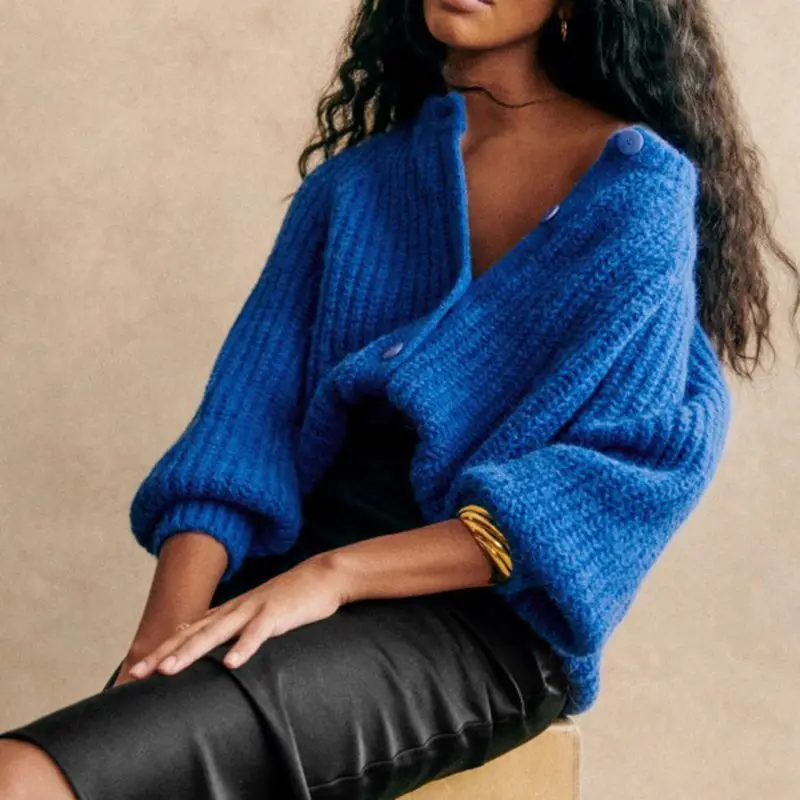
Travel-specific cashmere applications address the universal challenge of unpredictable temperatures during journeys. A versatile cashmere piece transforms overnight flights, aggressively air-conditioned museums, or unexpectedly cool restaurant environments. The natural wrinkle resistance and odor-repelling properties make cashmere particularly valuable during extended travel when laundering options may be limited.
Unexpected pairings with summer fabrics create distinctive warm-weather aesthetics. Consider these combinations:
– Lightweight cashmere tee with tailored linen shorts
– Cashmere tank under a sheer cotton or silk button-down
– Fine-gauge cashmere cardigan with a flowing summer dress
– Cashmere wrap as an impromptu skirt cover-up over swimwear
The psychological comfort of cashmere remains valuable even in warmer settings. The gentle touch against skin provides sensory reassurance that transcends strict temperature requirements – we often reach for cashmere not just for physical warmth but for emotional comfort during transitional experiences.
Estate Cloth’s women’s cashmere cardigans offer excellent options for these summer adaptation strategies, with lightweight constructions specifically designed for layering in variable conditions.
Addressing Common Concerns About Non-Winter Cashmere
Many consumers hesitate to embrace cashmere beyond traditional winter months due to persistent misconceptions. Addressing these common concerns with evidence-based responses helps unlock cashmere’s full potential in your year-round wardrobe.
“Won’t I overheat in cashmere during spring?”
Unlike synthetic fibers that trap heat indiscriminately, cashmere actively regulates temperature through its unique fiber structure. The hollow core of cashmere fibers creates microscopic air pockets that release excess heat as your body temperature rises. Additionally, lightweight cashmere (14+ gauge) enhances this natural ventilation through looser knit structures. Many people find properly selected cashmere more comfortable than cotton in fluctuating spring conditions precisely because of this adaptive quality.
“Is lightweight cashmere as durable as heavier versions?”
Durability in cashmere depends more on fiber quality than weight. Premium lightweight cashmere made from longer fibers (36mm+) can actually outlast heavier versions made from inferior short fibers. The key factors are fiber length, ply construction, and proper care rather than weight alone. While lightweight cashmere requires more careful handling during washing, its resilience during wearing often matches or exceeds heavier alternatives when fiber quality is consistent.
“How do I prevent moth damage during summer storage?”
Effective moth prevention combines multiple strategies: thorough cleaning before storage (as moths are attracted to body oils, not cashmere itself), proper air circulation through breathable cotton storage bags (never sealed plastic), natural repellents like cedar or lavender (refreshed quarterly), and periodic inspection during storage periods. These simple precautions virtually eliminate moth damage risk during seasonal transitions.
“Is cashmere worth the investment for limited seasonal use?”
The perception of “limited use” often stems from underestimating cashmere’s cross-seasonal potential. When selected appropriately, a single cashmere piece can function effectively for 7-9 months annually in temperate climates. This extended wearing period, combined with cashmere’s exceptional longevity (often 10+ years with proper care), creates favorable cost-per-wear mathematics that actually surpass less expensive alternatives that require frequent replacement.
For those exploring the ultimate guide to styling cashmere during transitional seasons, understanding these fundamental properties provides confidence in expanding cashmere’s role beyond winter-only wearing.
The scientific properties of cashmere directly address these common concerns. Its unique combination of insulation, breathability, moisture management, and temperature adaptation makes it arguably more suited to transitional conditions than any other natural fiber. By understanding these inherent characteristics, consumers can confidently incorporate cashmere into their year-round wardrobes.

